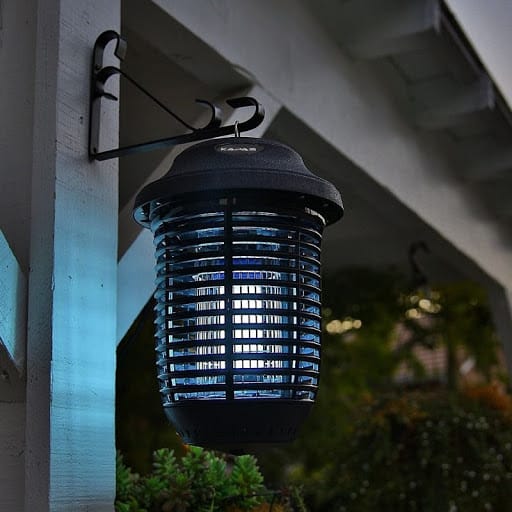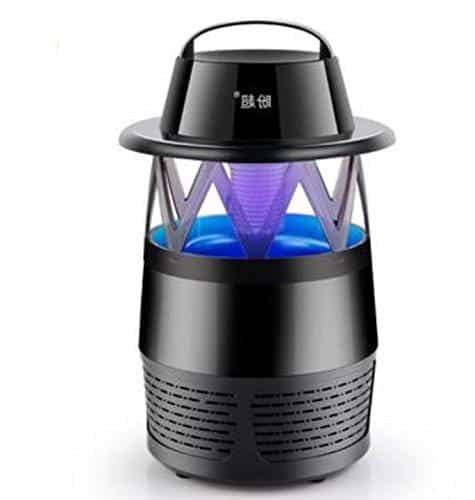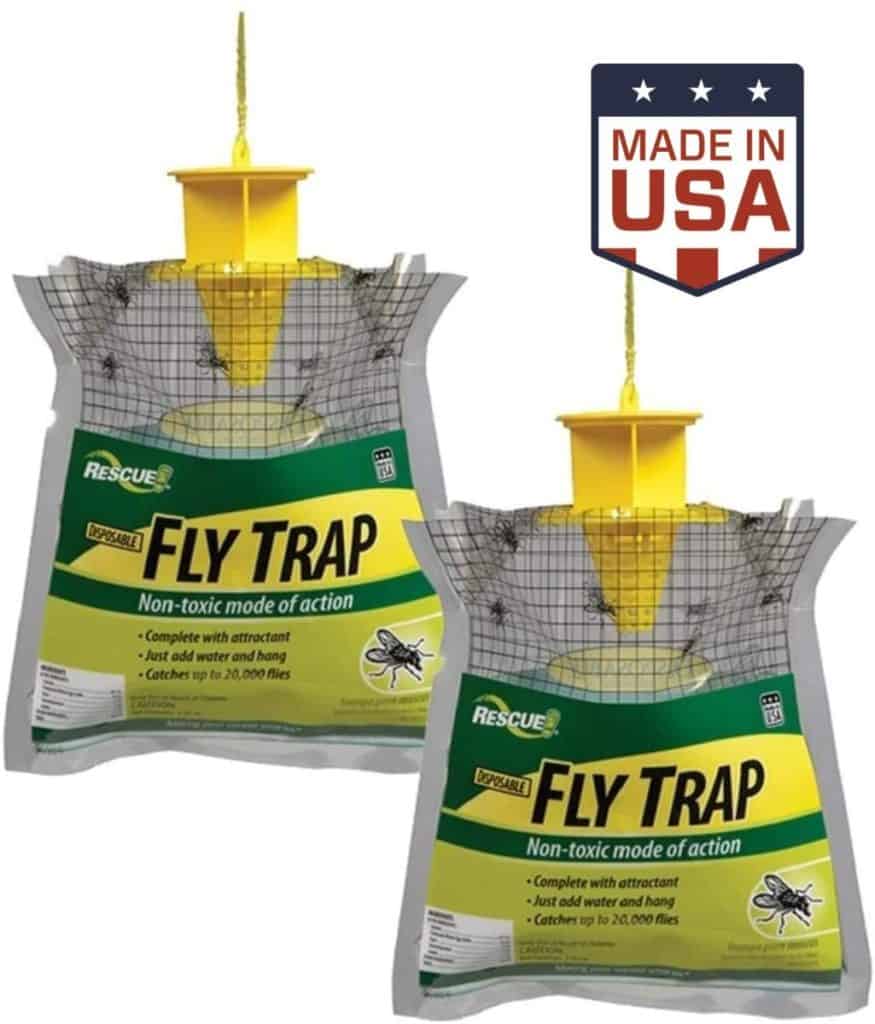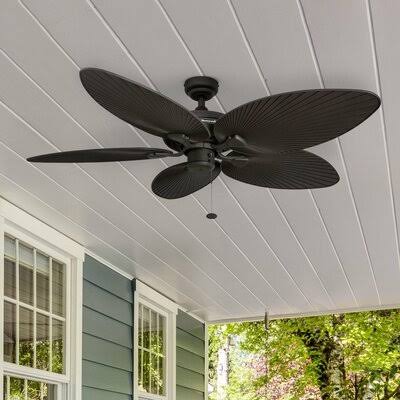Welcome to the twenty first century. We now have the technology to enjoy an outdoor meal without sharing it with flies or being chased by bees.
In Part 1 of this post, I discussed natural methods of dealing with flying insects to keep them off your body and away from your barbecue. In Part 2 we will look at the tech side of insect repelling. If you’re the type that prefers gizmos and gadgets then this post is for you.
- Zappers
- Traps
- Chemical Repellents
- Netting
- Personal Repellers
- Fans
- Clothing
- Mosquito Dunks

Image Kapasusa.com
Modern Technology
Advances in technology have changed the way we do everything. From the internet and cell phones to rockets into space, we now have the ability to do things early man couldn’t have even imagined. Modern technology did not bypass the backyard. We may still be cooking our food over an open flame but now we do it in a rust-proof cast-aluminum firebox with porcelain-enameled cast-iron cooking grates. And flying insects no longer need to be tolerated. They can now be kept off our cheeseburgers with portable insect repellers and electrocutor light traps.
Zappers
Bug Zappers, AKA electrical discharge insect control systems have been around for over 30 years and have zapped roughly 71 million flying insects per year. But are they really the right choice? Roughly 1.5 million are sold in the U.S. every year, so they must work. Right? Well, it’s debatable.
In an article by ScienceDaily, they state unequivocally, No. “They simply do not work as advertised. In fact, bug zappers actually make things worse by attracting more mosquitoes into your yard, and they end up killing thousands of beneficial insects that don’t bother people.”
Oh, but the blue light is so pretty. And the crackling noise it makes when a bug is zapped, it’s so satisfying. If your main goal is to keep flying insects away so you can sit out and enjoy a meal, don’t bother. Bees are in their nest sleeping at night. Mosquitoes are attracted to the light, but once they get in close, the carbon dioxide from your breath is a bigger draw. A bug zapper will kill flies though. Along with thousands of beneficial insects that don’t bother people, according to Jonathan Day, associate professor of entomology with the University of Florida’s Institute of Food and Agricultural Sciences.
So as much as I would love to place a nice link here for you to click on and purchase a bug zapper, I’m just not that kind of girl. The popular opinion among the scientific community is the zapper is an indiscriminate killer and is actually bad for the environment. The only contrary opinion I could find was that of the people who make bug zappers.
Not So Fun Fact: Mosquitoes are vectors for diseases like Malaria, Zika, and Dengue. As a result of this, mosquitoes are responsible for around 1 million deaths per year!
Traps
The definition of a trap is a device or enclosure designed to catch and retain animals (or insects), typically by allowing entry but not exit or by catching hold of a part of the body. These traps are all very effective. They do not repel insects, they catch them and kill them. While all are similar they do work in several different ways.
As an Amazon Associate I earn a small commission from qualifying purchases.

- The Sticky Trap uses a smelly bait to attract insects. When the insects come for the bait they get stuck on a sticky paper and die. These traps are very effective at trapping most flying insects. The main drawback is that these traps have the sticky part exposed. If used outside a bird can fly into it and be killed. For that reason, the Humane Society does not recommend them. These small ones though, I like. I don’t think there is much of a chance a bird will get caught in it.
Image Trappify.com
- The Fan Trap has an ultraviolet light that lures the insect close and a vacuum fan will suck them into a container where they will die. These traps have no chemical odor and no pesticides. The insects are trapped in a retaining cage and die within 12 to 24 hours of dehydration. The question I couldn’t find an answer to is, “How do you know the insects are all dead when you go to empty it?” I don’t want them flying back out when I open it.


- The Bag Trap You add water to the bag to dissolve the attractant, the flies smell it and are lured in and drown in the water. These traps are only effective on flies but boy do they work shockingly well. The drawback here is the bag is gross to look at when filled. You don’t touch anything icky but you see it.
- Carbon Dioxide Trap These traps use carbon dioxide, mimicking human and animal breath, to lure mosquitoes in and either a vacuum fan or sticky tape to trap them inside a container. Carbon Dioxide traps are the newest technology and do come with the highest cost.

Image Dynatrap.com
Not So Fun Fact: Flies like to eat manure or old garbage. Some of the germs from these materials can stay on their feet or mouthparts. When a fly lands on your food, those germs will get on your food.
Chemical Repellents
There are sprays that kill flying insects, on contact, in the air, and sprays and lotions that you put on your body to repel them. There are devices that emit chemicals to create an insect-free zone. According to the CDC, When used as directed, EPA-registered insect repellents are proven safe and effective, even for pregnant and breastfeeding women. Carefully follow label directions for repellent use and reapplication. Do not use repellent under clothing or on skin that is injured or irritated.
DEET: In a Consumer Reports article from April 2019 they report, “Consumer Reports’ testing has consistently ranked deet-based products among the top performers, and our experts agree with the broad scientific consensus that the chemical is safe and effective when used as directed.” In fact, 15 of their 20 recommended insect repellents use DEET as their active ingredient. The EPA states, “Products containing DEET currently are available to the public in a variety of liquids, lotions, sprays, and impregnated materials (e.g., towelettes, roll-on). Formulations registered for direct application to human skin contain from 5 to 99% DEET.”
Picaridin: Picaridin repels mosquitoes, biting flies, ticks, fleas, and chiggers. It is a synthetic compound first made in the 1980s. It has been widely used as an insect repellent in Europe and Australia and has been available in the United States since 2005. There are about two dozen products in the U.S. made with it. These include pump sprays, liquids, aerosols, and wipes. For more information on picaridin, you should visit, The National Pesticide Information Centers website.

Permethrin: You can purchase a spray and treat your clothing to kill black flies, ticks, and mosquitoes but has no harmful side effects to humans if used properly. Permethrin clothing spray is effective against mosquitoes, ticks, mites, and other bugs for six washings or six weeks, and it’s as effective as 100 percent DEET. Odorless after drying, it won’t stain or damage your clothes. Mosquito-repellent clothing is also available and will be discussed in more detail in the Clothing section of this post.
Allethrin: Is used to create a 15′ by 15′ clear area using a chemical vapor. It is becoming very popular because it does work. However, it is not safe around food and many people report slight eye irritation from the vapor. Products containing allethrin, such as the Thermacall bug-repelling lamp are best used for hikes and gardening. It is particularly harmful to the honey bee though, so if you like honey bees more than you dislike mosquitoes you should try a different method.
Metofluthrin: Is also used in vapor emitting products, like Off! Clip-On mosquito repellent. Like allethrin, it does work to repel mosquitoes but is not safe to be used around food and beverages and you should be careful not to directly inhale the vapor. Classified by the EPA as a neurotoxin and as a potential carcinogen, this is one chemical I’m not comfortable recommending even though it is reasonably effective.
Netting
The use of netting for protection from insects dates to prehistoric times. Cleopatra slept under one, the builders of the Suez Canal used them and so can you. With the advent of modern technology, netting can now be treated with chemicals like permethrin for additional protection. For maximum effectiveness, the nets should be re-treated with insecticide every six months.



Tents are a great alternative to insecticides and repellents. There are tabletop models to just keep them off the food or large ones that fit you and the furniture. The bugs stay out and get to live another day.
Not So Fun Fact: Mosquitoes are the world’s deadliest animals.
Personal Repellers
Personal repellers come in many forms. There are clip -ons, bracelets, patches, key chains, and more. Like most personal devices they are just smaller versions of the larger backyard variety. With one notable exception.
Mosquito Patch: The patch is only good to repel mosquitoes and many users state they really do work. There are no studies yet proving or disproving their effectiveness. The way the patch works is by saturating your skin with vitamin B1, which makes the way you smell unattractive to mosquitoes. So they don’t bite you.
I have worn them on a week-long camping trip and found them very effective. I noticed I smelled a bit medicinal but I was bite free. The package stated good for 36 hours but I put a new one on each morning.
Clip-On Fans: Most fans are made to attach at your waistband and use the chemical allethrin to repel insects. They do work well, but the vapors can be harmful if you breathe them in. If you have small children that are somewhere near waist-high to you, I would seriously think twice before using one of these
Ultrasonic Repellers: These devices claim to emit high-frequency sounds, too high for humans to hear. Insects are supposed to hear it just fine and be repelled by it. Please save your money, there is absolutely no proof these work, and experts state any effect they may have is short term because the insect will become accustomed to the sound.
Butane Cartilage Repeller: These are interesting. The heat from the butane cartridge heats a pad soaked with allethrin and causes it to become vapor and keeps mosquitoes away. Again, they work, but vapor can be harmful.
Fans
Fans are an age-old method of both keeping cool and keeping flying insects away. These are the perfect environmentally friendly option. If you have a covered patio where you eat, consider getting a ceiling fan, not only will it keep the flies, bees, mosquitoes, and gnats off of you, it will also keep them off of your food. A ceiling fan may not get rid of them 100%, but even a 75% reduction is a major improvement. Fans do more than just create wind to blow the bugs away. According to The New York Times, “A fan dilutes and disperses the carbon dioxide you exhale. Carbon dioxide is one of the major chemicals that attract mosquitoes. The wind from a fan also cools you off. Sweat, lactic acid, and body heat attract mosquitoes — factors that a fan can help minimize.”


As an Amazon affiliate, I earn a small commission from qualified purchases
Clothing
Permethrin, as noted earlier, is a synthetic version of a chemical produced naturally by the chrysanthemum flower. It works more like an insecticide than a repellent. It doesn’t stop bites by preventing mosquitoes from landing on you but by incapacitating or killing the insects after they land and before they bite.
In a Consumer Reports article from 2016, they tested shirts from L.L.Bean and ExOfficio, and found that while they can help protect against mosquitoes, in their tests some worked better than others—and none were foolproof. The shirts don’t eliminate the need for using an effective repellent on your skin. In fact, the manufacturers stress the importance of wearing the clothing along with a repellent.
You can purchase shirts, pants, dresses, jackets, scarves, and hats. Undergarments are not recommended.
Click here to see what mosquito repellent clothing is available Amazon. We may earn a small commission from qualifying purchases.
Mosquito Dunks
Mosquito Dunks are made from granules of bacillus thuringiensis packed into a doughnut shape. Mosquito Dunks work by gradually releasing their natural larvicide in standing water and the mosquito larva feeds on them and dies. The dunks only work on mosquitoes so you won’t kill off any beneficial insects. For an extensive review check out Insectcop,net.
These work great. Use them anywhere water accumulates. I’ve used them in my bird baths. The granules are only harmful to the mosquito larvae and don’t hurt the birds at all. Click here to check them out on Amazon.
Final Not So Fun Fact: If you attempt to remove a wasp’s nest but do not remove the entire nest, other wasps can return and use the remaining parts of the nest or build on to it to build a new nest.
